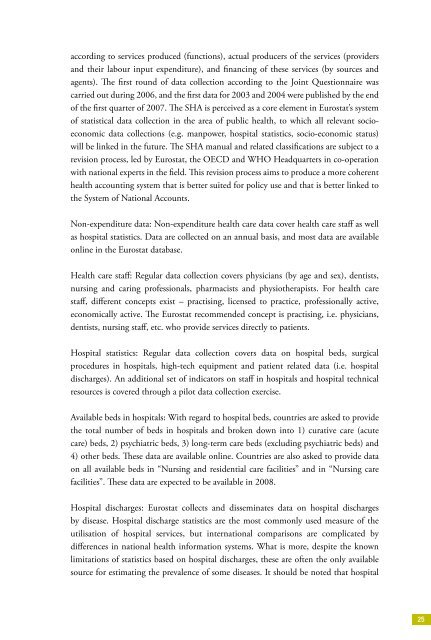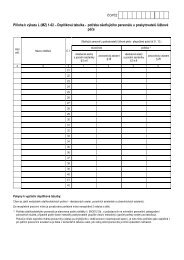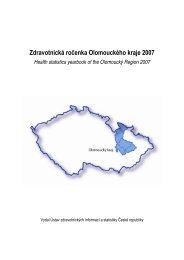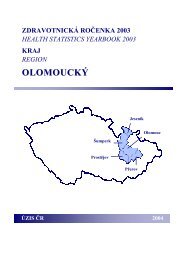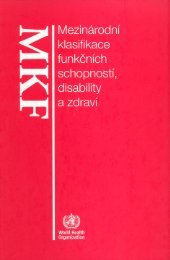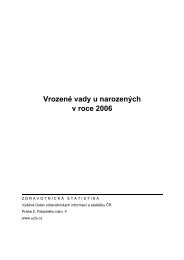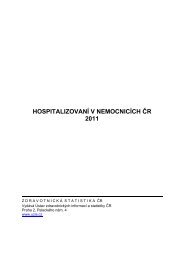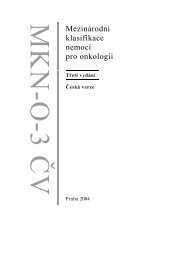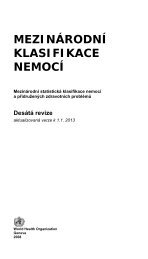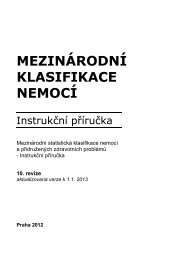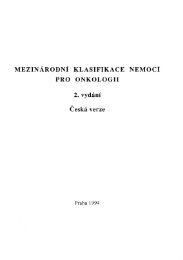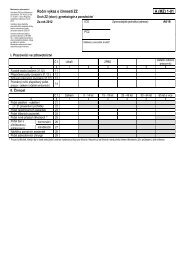ECHIM Final Report
ECHIM Final Report
ECHIM Final Report
Create successful ePaper yourself
Turn your PDF publications into a flip-book with our unique Google optimized e-Paper software.
according to services produced (functions), actual producers of the services (providers<br />
and their labour input expenditure), and financing of these services (by sources and<br />
agents). The first round of data collection according to the Joint Questionnaire was<br />
carried out during 2006, and the first data for 2003 and 2004 were published by the end<br />
of the first quarter of 2007. The SHA is perceived as a core element in Eurostat’s system<br />
of statistical data collection in the area of public health, to which all relevant socioeconomic<br />
data collections (e.g. manpower, hospital statistics, socio-economic status)<br />
will be linked in the future. The SHA manual and related classifications are subject to a<br />
revision process, led by Eurostat, the OECD and WHO Headquarters in co-operation<br />
with national experts in the field. This revision process aims to produce a more coherent<br />
health accounting system that is better suited for policy use and that is better linked to<br />
the System of National Accounts.<br />
Non-expenditure data: Non-expenditure health care data cover health care staff as well<br />
as hospital statistics. Data are collected on an annual basis, and most data are available<br />
online in the Eurostat database.<br />
Health care staff: Regular data collection covers physicians (by age and sex), dentists,<br />
nursing and caring professionals, pharmacists and physiotherapists. For health care<br />
staff, different concepts exist – practising, licensed to practice, professionally active,<br />
economically active. The Eurostat recommended concept is practising, i.e. physicians,<br />
dentists, nursing staff, etc. who provide services directly to patients.<br />
Hospital statistics: Regular data collection covers data on hospital beds, surgical<br />
procedures in hospitals, high-tech equipment and patient related data (i.e. hospital<br />
discharges). An additional set of indicators on staff in hospitals and hospital technical<br />
resources is covered through a pilot data collection exercise.<br />
Available beds in hospitals: With regard to hospital beds, countries are asked to provide<br />
the total number of beds in hospitals and broken down into 1) curative care (acute<br />
care) beds, 2) psychiatric beds, 3) long-term care beds (excluding psychiatric beds) and<br />
4) other beds. These data are available online. Countries are also asked to provide data<br />
on all available beds in “Nursing and residential care facilities” and in “Nursing care<br />
facilities”. These data are expected to be available in 2008.<br />
Hospital discharges: Eurostat collects and disseminates data on hospital discharges<br />
by disease. Hospital discharge statistics are the most commonly used measure of the<br />
utilisation of hospital services, but international comparisons are complicated by<br />
differences in national health information systems. What is more, despite the known<br />
limitations of statistics based on hospital discharges, these are often the only available<br />
source for estimating the prevalence of some diseases. It should be noted that hospital<br />
25


